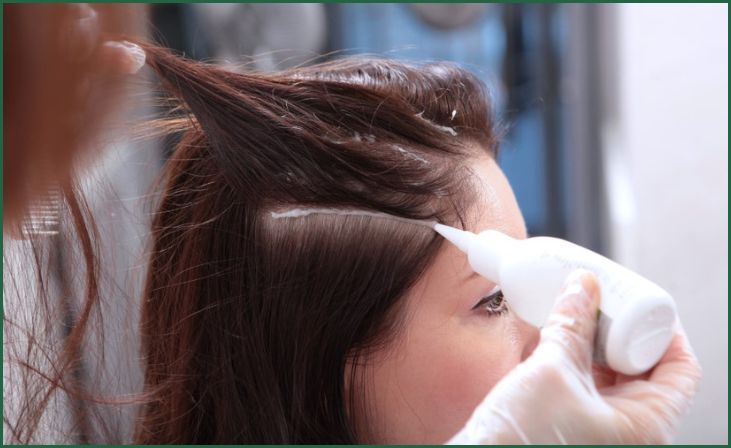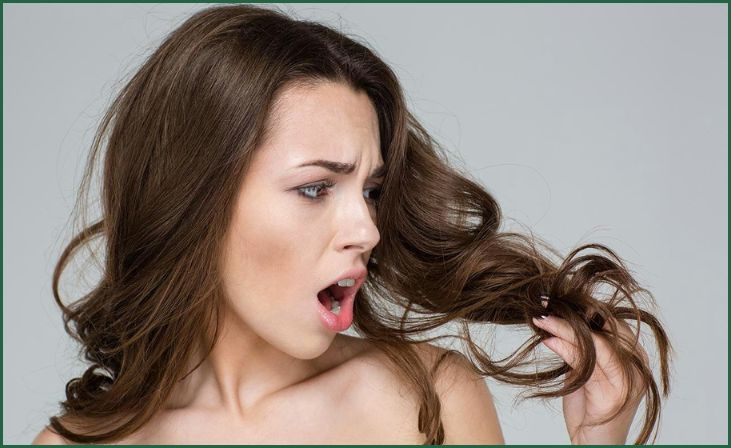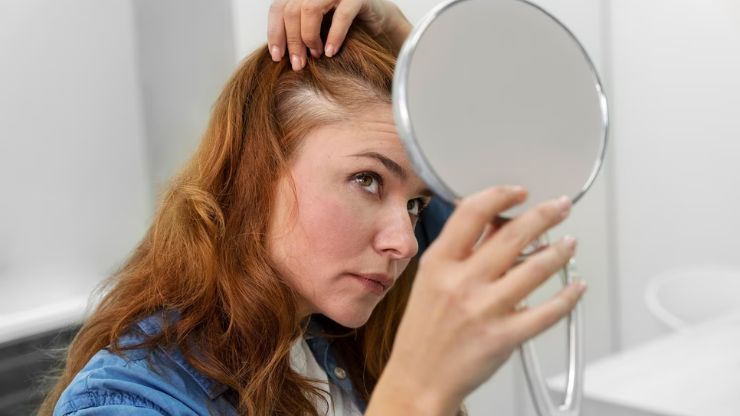Reasons Hair Dyes Cause Hair Loss or Thinning – Hair dyes have become an integral part of modern grooming routines, allowing individuals to express personal style and cover graying strands. However, the widespread use of commercial hair dyes has raised concerns about potential links to hair loss or thinning.
This concern is rooted in the chemical composition of these dyes, which often include harsh elements like ammonia, peroxide, and para-phenylenediamine. These substances can trigger scalp irritation, allergic reactions, and overprocessing, leading to damage and dryness. Scientific studies and clinical observations have explored the complex relationship between hair dyes and changes in the hair growth cycle.
This outline will delve into the reasons hair dyes may contribute to hair loss or thinning, providing insights into the chemicals’ effects and exploring preventative measures and alternative options for those seeking vibrant hair without compromising its health.
Table of Contents
ToggleReasons Hair Dyes Cause Hair Loss or Thinning
Allergic Reactions

Hair dyes may cause allergic reactions, leading to hair loss. Allergies to dye ingredients can trigger irritation, inflammation, and follicle damage.
Chemicals like ammonia and peroxide can weaken hair, making it prone to breakage. Individuals with pre-existing allergies or sensitive skin may be more susceptible. If you experience persistent reactions, consult a dermatologist for guidance.
Chemical Damage
Hair dyes often contain harsh chemicals like ammonia and hydrogen peroxide, causing potential damage to the hair. These chemicals compromise the hair shaft, leading to weakened strands and increased susceptibility to breakage.
Overuse or frequent color changes may result in overprocessing, further contributing to hair damage. Proper application and adherence to recommended processing times are crucial to minimize the risk of chemical harm.
To maintain healthy hair, consider using conditioning treatments and limiting the frequency of dyeing. If experiencing significant damage, consult with a professional stylist or dermatologist for personalized advice.
Also, Read – Dark Hair with Highlights & Balayage
Overprocessing
Overprocessing occurs when hair is subjected to excessive chemical treatments, such as frequent dyeing or harsh chemical applications. This can lead to significant damage, weakening the hair structure and causing breakage.
Overexposure to chemicals like ammonia and hydrogen peroxide strips the hair of essential nutrients and moisture, leaving it brittle and more prone to splitting. Signs of overprocessed hair include dryness, frizz, and a lack of elasticity.
To prevent overprocessing, follow recommended dyeing intervals, use conditioning treatments, and consult with a hairstylist for professional advice on maintaining healthy hair during color treatments.
Harsh Ingredients
Some hair dyes contain harsh ingredients that can adversely affect hair health. Ammonia, commonly found in dyes, can strip the hair of its natural moisture, leading to dryness and brittleness. Peroxide, another common component, may contribute to damage by opening the hair cuticle.
Prolonged exposure to these harsh chemicals can weaken the hair shaft, making it more susceptible to breakage and thinning.
Additionally, ingredients like parabens and sulfates can cause scalp irritation. Choosing dyes with gentler formulations or opting for natural alternatives may help mitigate the impact of harsh ingredients on hair texture and overall health.
Incorrect Application

Incorrect application of hair dye can lead to hair loss or thinning. Leaving the dye on for too long, using expired products, or applying it unevenly can cause adverse effects. Overlapping previously dyed areas during touch-ups may result in overexposure to chemicals, weakening the hair.
Failure to follow instructions, including proper rinsing and conditioning, can contribute to damage. It’s crucial to adhere to recommended processing times, perform patch tests to check for allergies, and seek professional guidance if uncertain.
Careful and accurate application ensures the best results and minimizes the risk of hair-related issues associated with incorrect dye application.
Don't just scroll, subscribe!
BuzzTrail's unique web-stories are the cure for boredom you've been waiting for.
Also, Read – Benefits Of Braided Hairstyles
Pre-existing Hair Conditions
Individuals with pre-existing hair conditions, such as alopecia or psoriasis, may experience exacerbated symptoms with the use of hair dyes. Chemicals in the dye can irritate the scalp and worsen existing conditions, potentially leading to increased hair loss or thinning.
Those with sensitive skin or a history of scalp issues should exercise caution and consider patch testing before using hair dye. Consulting with a dermatologist can provide personalized advice on whether hair dye is suitable for individuals with specific pre-existing hair and scalp conditions.
Poor Scalp Health
Hair dyes may impact scalp health, potentially contributing to hair loss. Harsh chemicals in dyes can irritate the scalp, leading to inflammation and compromised hair follicles. Irritated scalp conditions may hinder healthy hair growth, causing thinning or shedding. Additionally, excessive dryness resulting from the dyeing process can affect the scalp’s natural moisture balance.
To maintain scalp health, consider using dyes with gentler formulations or opting for natural alternatives. Regularly moisturizing and nourishing the scalp can help mitigate the potential negative effects of hair dye on overall scalp health and hair growth. If scalp issues persist, consulting a dermatologist is advisable for proper evaluation and guidance.
Genetic Predisposition
Individuals with a genetic predisposition to hair loss may attribute thinning or shedding to the use of hair dyes. While dyeing hair doesn’t directly cause genetic hair loss, it can potentially exacerbate existing conditions.
Genetic factors contribute to the sensitivity of hair follicles to hormones, leading to pattern baldness. Hair dye, by causing damage or irritation, might accelerate this process in genetically predisposed individuals.
Understanding family history and consulting with a healthcare professional can provide insights into the role of genetics in hair loss. Managing hair dye use cautiously may be advisable for those with a known predisposition to hereditary hair loss.
Drying Effect
Hair dyes can have a drying effect on the hair due to the presence of chemicals like ammonia and peroxide. These substances strip the hair of its natural oils, leaving it dry, brittle, and more prone to breakage.
The loss of moisture can compromise the hair’s elasticity and shine. To counteract the drying effect, consider using moisturizing and nourishing hair care products, such as conditioners and masks, to restore hydration.
Additionally, spacing out dyeing sessions and avoiding excessive heat styling can help maintain the hair’s moisture balance, minimizing the risk of dryness and damage associated with the use of hair dyes.
Age-Related Changes

Hair naturally undergoes age-related changes, and some may attribute thinning or changes in texture to the use of hair dyes. Aging leads to a reduction in hair thickness and density due to factors like hormonal changes and decreased hair follicle activity.
While hair dye doesn’t directly cause aging-related changes, repeated dyeing over the years may contribute to dryness and fragility.
It’s essential to manage expectations and care for aging hair by using nourishing products and adopting a gentle hair care routine. Consulting with a hairstylist or dermatologist can provide personalized advice on maintaining healthy hair as it naturally ages.
Conclusion
In conclusion, while hair dyes offer aesthetic benefits, their potential role in hair loss or thinning demands careful consideration. The chemical components and frequent use can contribute to scalp issues and structural damage.
With informed choices, including patch testing, opting for gentler formulations, and moderating dye frequency, individuals can minimize risks. Exploring alternative, natural dye options further supports healthier hair.
Vigilance, professional guidance, and a balanced approach to hair coloring can ensure that style and health coexist harmoniously, empowering individuals to enjoy vibrant locks without compromising their natural beauty.
FAQs
Which chemicals in hair dyes are known to contribute to hair problems?
Which chemicals in hair dyes are known to contribute to hair problems?
Common culprits include ammonia, peroxide, and para-phenylenediamine (PPD). These substances can strip natural oils, cause dryness, and potentially disrupt the hair growth cycle.
How can I minimize the risk of hair loss when using hair dye?
How can I minimize the risk of hair loss when using hair dye?
Conduct a patch test before full application, choose ammonia-free and gentle formulations, limit dyeing frequency, and ensure proper hair care and moisturization to minimize the potential damage.
Are there alternative hair dye options that are less likely to cause hair loss?
Are there alternative hair dye options that are less likely to cause hair loss?
Yes, alternatives like henna, vegetable-based dyes, and semi-permanent options are considered gentler and may pose fewer risks to hair health.

